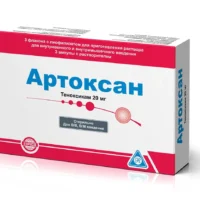Description
Teraflex (D-glucosamine, chondroitin) Capsules №120 Vial
Ingredients
- D-glucosamine sulfate
- Chondroitin sulfate
Dosage
Recommended dosage: Take 2 capsules daily with a meal or as directed by a healthcare professional.
Indications
Teraflex capsules are indicated for the relief of joint pain and inflammation associated with osteoarthritis.
Contraindications
Do not use Teraflex capsules if you are allergic to shellfish as the product contains ingredients derived from shellfish.
Directions
For oral use only. Swallow the capsules whole with a full glass of water. Do not exceed the recommended dosage.
Scientific Evidence
Studies have shown that the combination of D-glucosamine and chondroitin sulfate in Teraflex capsules can help reduce joint pain and improve joint function in individuals with osteoarthritis. These ingredients work synergistically to support cartilage health and reduce inflammation in the joints.
Additional Information
Teraflex capsules are manufactured in a facility that adheres to strict quality control measures to ensure the purity and potency of the product. Consult your healthcare provider before starting any new supplement regimen, especially if you have any underlying medical conditions or are taking other medications.
Clinical trials have demonstrated the effectiveness of D-glucosamine and chondroitin sulfate in improving joint mobility and reducing pain in individuals with osteoarthritis. These natural compounds provide a safe and well-tolerated alternative to traditional pain medications, with fewer side effects.





